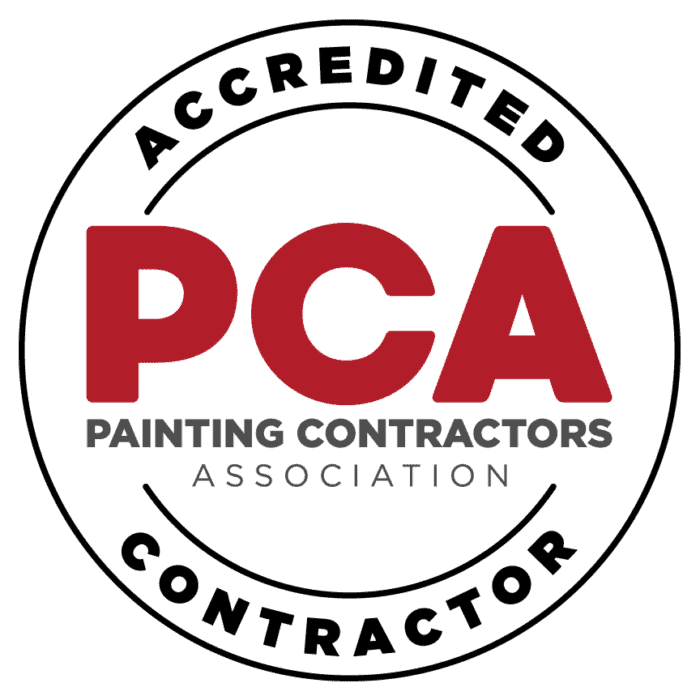If you’re gearing up for a painting project, you might be asking yourself, “How many coats of primer do I need?” It’s a great question, but the answer isn’t always as straightforward as you’d expect.
The number of primer coats depends on several factors like the surface you’re painting, the color you’re covering, and the type of paint you plan to use.
In this guide, we’ll help you figure out how many coats of primer you need for your next house painting project, and we’ll also cover why primer is such an important step in getting a long-lasting, smooth finish.
Key Takeaways:
- One coat of primer may work for similar colors or smooth surfaces.
- Two coats of primer are best for unfinished wood, new drywall, and drastic color changes.
- Three coats of primer are needed for textured surfaces, severe stains, or uneven areas.
- Primer improves paint adhesion and helps achieve a smooth, durable finish.
- Professional painters in Erie, CO can ensure proper primer application for optimal results.
Why Do You Need Primer in the First Place?
Primer is the unsung hero of most painting projects. While it may seem like an extra step, applying a coat of primer actually makes the final paint job look better, last longer, and adhere more effectively. It’s a base coat that gets your surface ready for the paint to do its job. Without primer, you risk issues like paint peeling, uneven coverage, and poor adhesion.
Here are a few reasons why primer is so important:
- Improves adhesion. It helps paint stick better to surfaces.
- Prevents stains. If you’re painting over stains or dark colors, primer helps prevent them from showing through.
- Smooths out surfaces. If you’re working with a rough or porous surface, primer helps create an even base.
- Seals the surface. It blocks moisture and keeps your paint from soaking into the material.
For homeowners in Erie, CO, professional painters will always suggest primer for the best results, especially when you’re working on new drywall, wood, or surfaces that have been repaired. A solid coat of primer will give your paint a smooth surface to work with, ensuring a durable and high-quality finish.
When Is One Coat of Primer Enough?
In some cases, one coat of primer is all you need. Here are a few situations where a single coat will usually suffice:
- Painting over similar colors: If you’re changing your wall color to something in the same family, one coat of primer typically does the job.
- Good condition surfaces: If the surface is already smooth and clean, one coat should cover it well.
- Metal surfaces: Metal that isn’t rusty or corroded can usually be primed with one coat.
Using one coat of primer can save you time and effort, but it’s important to remember that this depends on the specific circumstances of your project. In many cases, one coat is enough to provide a solid base, but more challenging surfaces may need an extra layer.
When Should You Use Two Coats of Primer?
Two coats of primer are typically necessary when you’re dealing with more challenging surfaces or significant color changes. Here’s when you should consider using two coats:
- Unfinished wood: Wood tends to absorb paint unevenly, which is why primer is essential to prevent blotchiness.
- New drywall: New drywall can soak up paint, leaving your finish uneven. Using two coats of primer helps create a smooth and consistent surface.
- Heavy stains or mold: Stains like water marks, mold, or smoke damage can be difficult to cover with just one coat. A second coat of primer ensures the stains won’t show through after painting.
- Drastic color changes: If you’re painting a light color over a dark one (or vice versa), two coats of primer are usually needed to achieve a clean, smooth finish.
Two coats of primer may take a little more time, but the results are worth it. Plus, it’s a small step that ensures the paint adheres properly and looks its best.
When Might You Need Three Coats of Primer?
Though it’s uncommon, there are certain situations where a third coat of primer might be necessary. Here’s when you might need to go the extra mile:
- Textured or rough surfaces: If you’re working with surfaces like masonry, plaster, or rough wood, you may need an extra layer to ensure the primer fills in the cracks and creates a smooth finish.
- Persistent stains: Some stains, especially those from water damage—are difficult to block with just two coats. A third coat of primer can help cover these stubborn spots.
- Uneven surfaces: If you’re working with surfaces that have been patched or repaired, the texture might vary. A third coat can help even out the surface before painting.
While three coats of primer are rare, they can make all the difference when you’re dealing with tough conditions. In most cases, though, two coats will be plenty.
How to Apply Primer Like a Pro
Applying primer properly is just as important as choosing the right primer. Here’s a quick guide on how to apply primer the right way:
- Prepare the surface: Clean the surface thoroughly to remove dust, dirt, and grease. If you’re painting over old paint, lightly sand the surface to improve adhesion.
- Choose the right primer: Different surfaces require different types of primer. Make sure you pick the right one—whether it’s for drywall, wood, metal, or masonry.
- Apply primer evenly: Use a paintbrush or roller to apply an even coat of primer. For larger surfaces, a sprayer can speed up the process.
- Let it dry: Give your primer time to dry completely before applying the paint. Be sure to follow the manufacturer’s instructions on drying times.
- Inspect the surface: Once the primer is dry, inspect the surface to make sure it’s smooth and ready for paint.
If you’re unsure about the primer application process, professional painters in Erie, CO, can take care of it for you, ensuring that the job is done right the first time.
Conclusion: How Many Coats of Primer Do I Need?
To wrap things up, the answer to how many coats of primer do I need depends on several factors—mainly the surface, the color you’re covering, and the type of paint you’re using. For most projects, two coats of primer will give you the best results, especially if you’re painting over new drywall, wood, or problematic stains. However, one coat may suffice in some situations, while others might require three coats to get the job done right.
Taking the time to apply primer properly will set the foundation for a paint job that looks great and lasts for years. Whether you’re working on a DIY project or hiring professional painters in Erie, CO, it’s always worth making primer a part of your process.
Our Painting Process:
- Consultation & Color Selection: We’ll help you choose the perfect colors for your space.
- Surface Preparation: Our team ensures the surface is properly cleaned and prepped for painting.
- Primer Application: We apply the right amount of primer for smooth and lasting results.
- Final Paint Coats: We use high-quality paints to finish your project with a flawless look.
- Clean-Up: Once the job is complete, we make sure everything is tidy and ready for you to enjoy.
Contact A New View Painting today for a FREE estimate! Serving Longmont, Frederick, CO, and the surrounding areas. Call us at 970-660-3993 now!





